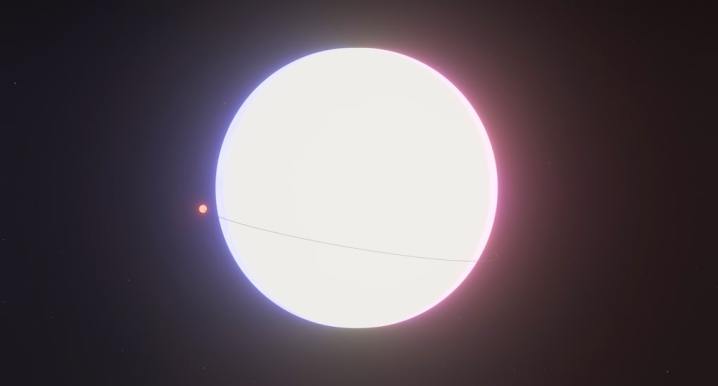Of the over 5,000 known planets outside our solar system, one of the most dramatic is 55 Cancri e. Affectionately known as the “hell planet,” it orbits so close to its star that it reaches temperatures of 3,600 degrees Fahrenheit and its surface is thought to be to covered in an ocean of lava. Located 40 light-years away, the planet has been a source of fascination for its extreme conditions, and recently researchers shared a new theory for how it got so hot.
The planet orbits its star, 55 Cancri A, at a distance of 1.5 million miles which means a year there lasts less than a day here on Earth. “While the Earth completes one orbit around our sun in 365 days, the planet studied here orbits once every 17.5 hours, hugging its host star, 55 Cnc,” said study author Debra Fischer of Yale University in a statement.

Researchers used a tool called the EXtreme PREcision Spectrometer (EXPRES) at the Lowell Observatory’s Lowell Discovery Telescope in Arizona to look at the light coming from the host star and focused on the way that light changed when the planet moved between the star and Earth. This told them that the planet orbits around the equator of the star, which is different from other planets in the system. There are five exoplanets in the system, with a pair of stars at the center, and the planets orbit at different degrees respective to the orbital plane.
This is unlike our solar system, where all of the planets essentially sit in the same flat plane. In our case, this is probably because all the planets formed from the same disk of dust and gas. So the fact that they are different orbits seen in the 55 Cancri systems suggests that these planets could have formed in different ways.
The planet 55 Cancri e is thought to have formed in a cooler orbit before being pulled in close to the star. That’s how it ended up so hot. “Astronomers expect that this planet formed much farther away and then spiraled into its current orbit,” Fischer said. “That journey could have kicked the planet out of the equatorial plane of the star, but this result shows the planet held on tight.”
The research is published in the journal Nature Astronomy.
Editors' Recommendations
- How to watch NASA launch its newest ocean and atmosphere observation satellite tonight
- James Webb sees evidence of an ocean-covered ‘Hycean’ exoplanet
- Hubble watches an extreme exoplanet being stripped by its star
- Astronomers spot an exoplanet creating spiral arms around its star
- Hubble observes weird star system with three off-kilter, planet-forming disks




